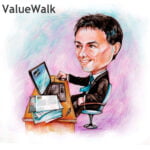Economic Goodwill
Economic Goodwill vs. Accounting Goodwill – A Treaty On The Competitive Advantages Of A Business by Anton F. Balint
Accountancy is a fascinating profession. It uses numbers to explain what a business is and does – at least in theory. The practice of financial reporting ought to give current and potential investors the necessary data about a particular business. In other words, it should be the bedrock of all investment decisions. However, on the balance sheet of most companies, two assets spread fear in the heart of conservative investors: intangibles, such as IP rights, and goodwill. While the former is arguably as hard to trace as the latter, there are methods, algorithms and an army of patent attorneys to help investors get a pretty clear understanding of the value of IP rights. On the other hand, goodwill is a different animal.
In a 1984 Berkshire Hathaway letter to shareholders, Warren Buffett wrote an appendix on goodwill. More specifically, he discussed the difference between accounting goodwill and economic goodwill. Very straightforward, accounting goodwill is the result of accounting principles and arises when a business is bought. The process is the following: Company A targets Company B as an attractive acquisition. Then Company A evaluates the fair value of the identifiable assets that it will acquire. Most often, however, the sum attributed as the fair value of the identifiable assets (after all liabilities have been taken out) is less than the purchase price of the business. That premium over the price paid for the identifiable assets is called “goodwill,” and it is assigned to the balance sheet as an asset. Sometimes accounting goodwill can be found under the extensive name of “Excess of Cost over Equity in Net Assets Acquired.”
Later we will examine in mathematical detail how this “asset” behaves and how cautious investors ought to treat it because, as Warren Buffet stated in the appendix, “except under rare circumstances, it [Goodwill] can remain an asset on the balance sheet as long as the business bought is retained.” In order to record the depreciation of this asset, amortization charges of an equal amount over not more than 40 years are recorded against the earnings account. Moreover, because such charges are not tax deductible, they have an effect on after-tax earnings. This is how accounting goodwill works. Now let us turn our attention to its sibling: economic goodwill.
Economic goodwill is the result of deeper forces that impact a business. It reflects the “moat” or competitive advantages of a particular business. To explain economic goodwill, we need a concrete example. Buffett’s initial example is the situation of See’s, which was bought by Blue Chip in early 1972 for $25 million at a time when See’s had only $8 million in net tangible assets. See’s had no debt, and it was earning a consistent $2 million net profit on the $8 million of assets — a consistent 25% return after tax on net tangible assets. It was a performance well above its peers and the market. As Mr. Buffett observed, what produced this amazing rate of return was not to be found in the premium over the fair value of the net tangible assets but in a cocktail of intangible assets, in particular, the company’s reputation. It was created on countless pleasant experiences that customers had with both the company’s product and personnel. These factors resulted in the business being able to earn the consistently high return on its net assets.
[drizzle]Coming back to the accounting process: Blue Chip paid a $17 million premium for See’s net assets and charged $425,000 to an income account annually for the next 40 years. In 1983, 11 years after the acquisition, the excess of cost over equity in net assets recorded by Blue Chip was reduced to around $12.5 million. At the same time, Berkshire Hathaway was owning 60% of Blue Chip and therefore, 60% of See’s. Berkshire’s balance sheet reflected 60% of the remaining $12.5 million (roughly $7.5 million). In 1983, Berkshire bought the rest of Blue Chip (the other 40%).The acquisition saw an accounting goodwill of $51.7 million, which included See’s premium of $28.4 million. The amortization charges were $1 million for 28 years and $0.7 million for the next 12 years. What Buffett observed was that different purchase dates and prices resulted in different values and amortization charges for the same asset. More importantly, in 1983, See’s recorded a net profit of $13 million on $20 million in net assets – a performance far above the initial cost of accounting goodwill. Therefore, while accounting goodwill decreases regularly with time, economic goodwill increases in an irregular but substantial manner.
Moreover, true economic goodwill tends to increase in nominal value proportionally with inflation. Why is that? Well, inflation tends to require businesses to raise their level of nominal investment in net tangible assets to keep up with rising prices. For example, let us assume we have a business earning $5 million after tax on $20 million in net tangible assets and another company that earns the same amount but on $30 million of such assets. In other words, the former produces a 25% return on net tangible assets after taxes, and the latter produces a 16.6% such return. The latter, therefore, might sell at a lower price than the first company. But why? How can less net assets dictate a larger price?
Well, this is the beauty of economic goodwill. The potion of qualitative factors that crystalize the economic goodwill ensures that the first company can produce continuously higher rates of return on its net tangible assets and therefore, the higher price is justified. Moreover, inflation erodes the return on net tangible assets, so the latter business operating on $30 million in net assets will require a larger nominal investment just to ensure the survival of the business, compared to the first corporation, which is able to operate on a lower base of assets. Therefore, you can think about economic goodwill as an invisible shield against inflation: just like the electromagnetic field protects our Earth from galactic radiation, economic goodwill (the “moat,” the competitive advantage) of a company will protect against inflation: a customer that enjoyed the product and the service of the business will continue to enjoy it even if it costs 2% more. People are more likely to pay a premium and accept the costs being passed on to them if the product is one that exceeds their expectations regularly and builds a psychological mechanism of confidence in what the company makes or serves.
Two important observations are needed to be made before illustrating economic goodwill with contemporary examples. Firstly, we notice a deviation from Benjamin Graham’s investment approach of “net nets.” Graham suggested that qualitative factors, such as the ability of the management team and the customer experience, should be left out of the business valuation and that we ought to focus more on the quantitative elements as they will render, in the long term, a more stable path to earn returns in excesses over the market. What Warren Buffett suggested to be the economic value is an approach adopted by the legendary Philip A. Phisher, which proved that qualitative factors are as important as quantitative matters. And as we will see below, these qualitative considerations can play an even bigger role than the ratios offered through fundamental analysis of financial reports.
Secondly, what at first might seem like a deviation from a proven formula for investment success (which works today as it worked back then, according to work done by Tobias Carlisle) is in fact a development of value investment. It is indeed true that mathematical accuracy cannot be attributed to qualitative considerations. However, the mind of a successful investor must be trained to operate with incomplete information and must be able to assess data that impacts financial statements, be it the quality of management, industry forces, customers’ trends etc. To be more precise, what economic goodwill shows is this. The processes of business analysis can be divided into two parts: one that is mathematical analysis (quantitative) and a second that is psychological analysis. The business world rolls on numbers and human interaction. Understand both individually and how they connect, and you will be an outstanding business analyst. Now let us move on to apply the concept of economic goodwill to two companies: Apple and Tesla Motors.
Apple’s market capitalization is roughly $660 billion and its net assets’ value is roughly $110 billion (I have deducted $10 billion of intangibles for a conservative valuation). Therefore, it sells at around 6.6 times higher than its net identifiable assets. So is it worth it? On the $110 billion, Apple earned, after tax (the net income), $53.4 billion. That is a 48% rate of return on identifiable assets, well above its competitors. Moreover, the company’s product line is unique in all its aspects: its software and hardware are interconnected, the design makes the end customer feel like part of the company’s culture, and the company continues the philosophy of its mastermind, Steve Jobs. Everything that Apple produces and designs ignites a burning desire in the minds and hearts of consumers to buy the product or service. Also the market share and the geographical coverage of this company is remarkable: the unicity of its products gives Apple an impenetrable armor against competition, and therefore, it can sell its products more easily around the world.
The lesson follows: a business that is expected to earn above-average returns will be worth more than its net identifiable assets. The capitalized value of this excess return is economic goodwill. So as we can see, economic goodwill is an amalgamation of multiple factors that need not touch upon fundamental valuation too much. Such factors include: being a low cost producer, the absence of regulation over the industry, and/or the company’s reputation based on the customer sentimental attachment to it and on the superior quality of the products and services it delivers.
For examplem, Apple had its stores designed to enhance the buying experience! This reputation creates what Buffet calls a “franchise, which allows the value of the product and not its production cost to be the major determinant of the selling price. So how big is Apple’s economic goodwill? The answer cannot be assessed with absolute accuracy. However, its competitors sell between 4.5 and 10 times their net tangible assets, and not one of them produced a higher return after taxes than 20%. Considering its business model, which focuses on its main product (the iPhone) and builds around it devices that connect as one, the loyal client base is built upon countless satisfying interactions with Apple’s stores and the performance of its competitors. So Apple as a company has a solid moat that renders a higher price than its net tangible assets. Comparing the amount of tangible assets (net) that Apple has with that of its competitors, and this will help you build a clearer vision.
The second company I would like to discuss is Tesla Motors. The moat this company has is stranger and more unique than Apple’s. The economic goodwill that Tesla commands is harder to justify, as the company has been making a loss since its IPO in 2010. Therefore, its return on net tangible assets is 0%. However, two considerations upon which its competitive advantage rests need to be highlighted. Firstly, Elon Musk’s ability as an entrepreneur is without equal across the world. He founded and cofounded three companies in three different industries: SpaceX (space exploration), Tesla Motors (automotive) and Solar City (renewable energy – the solar energy niche market). No mathematical value can be attributed to his abilities as a business person. However, Musk is the image of Tesla.
One of the main reasons investors are optimistic about the company is based on his competency as an engineer, salesperson and visionary. A second reason investors see Tesla as a good investment is its revolutionary power. Its cars are 100% electric and employ cutting-edge A.I. technology. The world is in a transaction period towards sustainable and cleaner energy. Also A.I. is shaping everything we know, from finance (high frequency trading algorithms that learn the market vicissitudes) to our search engines such as Google (cookies that remember what you like are part of machine learning algorithms).
Tesla employs new technology with a spectacular rate of success – its cars are considered the safest in the world. Moreover, the company expands its service station network and its battery capacity to have sustainable sources of stored energy. The company sells at around 28 times its net tangible assets of $1 billion. Is this double digit premium justifiable? Let’s dig deeper than what the financials tell us and look at the elements Philip A. Fisher considered.
Tesla ticks almost all the “qualitative” boxes: superiority of product, management is candid to investors (the reports are direct and touch on all aspects of the business), it satisfies two economic needs (better and safer private transport and mitigating environmental impact from carbon emissions), its management took several steps in improving the selling volume of the cars (by cutting the cost of production and investing in technologies that help the assembly of the cars), and the investment in R&D paid off (it produced new models and enhanced the technology of the Model S). Finally, one important consideration is that the world loves Tesla for its aim: people actually are fond of this company and its CEO. Return on investment might be a rational consideration, but emotions are the driving factors of the economic goodwill. Tesla is a company that most of us do not want to see fail. It is as simple as that.
Therefore, what economic goodwill is remains a beautiful mystery. However, look around you, see what people love to buy, what they are talking about, what they enjoy, and why they enjoy that service or product and look for companies that satisfy strong economic needs.
[/drizzle]










